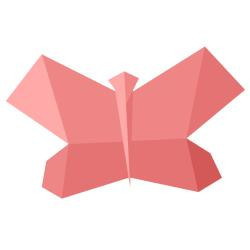Shira Solomon's collections
Women and Sewing in the Revolutionary Era
<p>Among the many purposes art fulfills, it can convey a message, allow self-expression, and indicate a way of life. In the Revolutionary War era, while boys were taught traditional knowledge (much like today), girls were instructed in the arts--including sewing.<a href="https://learninglab.si.edu/collections/anglo-women-in-colonial-america/CUoPYid1q21jYJ6Y#r">1</a> This medium helped women contribute to their home as well as communicated thoughts and emotions of them and their country.</p>
<p>The art of sewing was used in practical manners through household items like quilts and bed coverings, giving a picture of normal life. Even the decorative works were practical; Education accessible only for the rich, the art was displayed in houses to show off their wealth and skill in order to attract suitors. It also conveyed values about religion and family, with passages and pictures, helping people in their time--and ours--understand their thoughts that otherwise would have gone unacknowledged. Some women even professionally embroidered to exchange it for money and goods, giving some financial independence in a time of assumed submission. <a href="https://www.metmuseum.org/toah/hd/need/hd_need.htm">1</a></p>
<p>American culture also form into what it is today through these creations. Using stylized images, they created the picture of a patriot, dictating to the nation what a true American looks like and promoting the war effort. It showed what the country was as well as what it could be. In a time of adjustment and confusion, it gave the nation a direction of how to live.</p>
<p>Sewing gave a voice to the voiceless and helped define a woman's traditional role in American society. From the practical household items to a platform to display their personality, it gave them an outlet to educate and express themselves, giving them a way to participate and contribute to the country.</p>
<p>The first article is an embroidery frame. This was used to hold embroidery in place when creating. It is what opened the door for so many women to learn this skill and create a whole new influence in America.</p>
<p>The second article listed, called Sweet Sampler, is an example of what a girl would learn to do in school. This was made by an 13-year-old. A simple scene with just , this shows the beginning of a hard-to-attain education and the seeds of what grew into a popular form of expression.</p>
<p>The third article shows a quilt, one example of a household item done by sewing. Though the creator had no kids, it shows how the skill could be used practically to keep a family warm.</p>
<p>The fourth article is a coverlet (bedspread). Its design was inspired by Indian bed hangings, showing how American culture is influenced by outsiders-- and shaped by it-- through this medium. It is yet another example of how sewing was applied in basic items.</p>
<p>The fifth article, a pair of decorated shoes, was the only one I found of its kind. It was designed after German trends; this is another sample of other nations' influences on America, creating what is considered "American" today. In addition, it shows another use for sewing and embroidery.</p>
<p>Article six is a woman's stylized sampler tracking her genealogy. This is an example of work done with sewing to attract suitors and display wealth and education. It showcases what is considered "good" values through this display, giving a hint to the culture at the time.</p>
<p>Article seven demonstrates religious virtues. This perpetuates the cultural religious emphasis at the time, especially among the elite. This is yet another indication of American culture and also shows the woman's values-- a detail we otherwise wouldn't have known about.</p>
<p>Article eight, along with the rest following it, are more professional. Made with embroidery thread, it depicts a pleasant rural life, giving an idea of what was considered ideal life (for an elite, at least). The artist clearly had to develop this skill with the very little independence they were given.</p>
<p>Article nine's details were done using needlework. The artist depicted a woman flying an American flag in a picturesque setting. This became "a symbol of liberty to Americans during the Revolutionary War period" (National Museum of American History).</p>
<p>The final article depicts Liberty with armor and "a boy and girl looking toward a distance hilltop" (National Museum of American History). There are national emblems and symbols included, showing this picture is patriotic. This is yet another example of women influenced (as well as influencing) nationalism and the American war effort.</p>
 Shira Solomon
Shira Solomon
10


